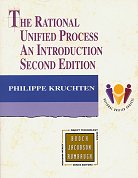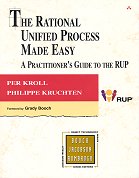This slim books gives a brief overview of all parts of the OO software development process known as “The Rational Unified Process” – Rational because that is the name of the company that owns it, Unified because it is the result of taking the best of (some cynics might say, every part of) several OO development processes that flowered in the 1990s.
It covers the stages of the process, the iterative style of projects, the various models that form the core of a development (use case models, static models and dynamic models), and the various workflows that build up the process. Necessarily brief, it covers most things at a level suitable to get a flavour of RUP, but not at sufficient depth to start using it.
I would have liked to have seen more on the iterative development part. I found it slightly confusing on first reading, working out where the iterations lie. A full development consists of several cycles, with an external release at the end of each cycle; each cycle consists of several iterations, with an internal release at the end of each iteration. Other OO development processes that emphasise iteration, such as Rapid Application Development (RAD), or Extreme Programming (XP), place a lot more emphasis on close user involvement at each of these internal iterations, for prioritising the requirements to be implemented in each iteration, and for evolving the requirements as their consequences become clearer in the manifested software. RUP, or at least the description of it given here, seems to embrace the iterative philosophy rather more half-heartedly.
But this is mainly a comment on the process, not on this book. This is a good short readable overview, to give you a handle on the key concepts and terminology before you delve deeper into more detailed treatments.

